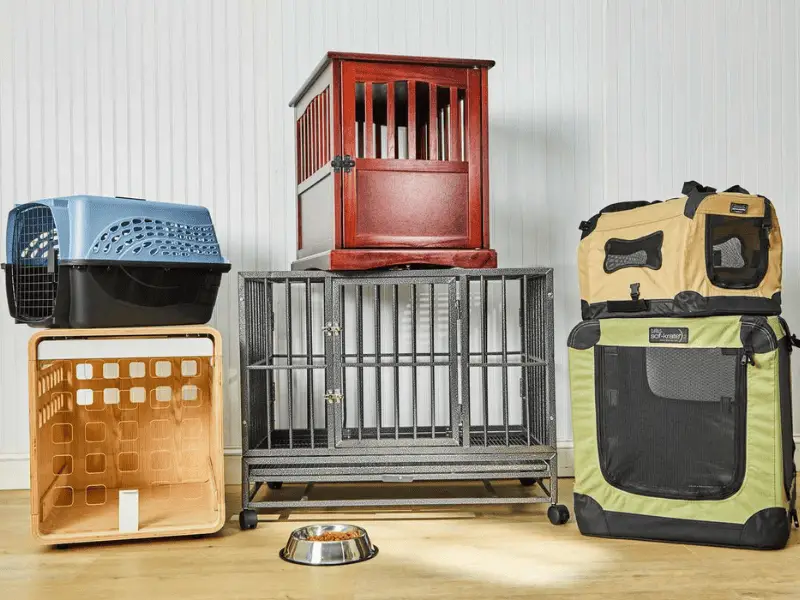Discover the size debate surrounding small dogs and learn about toy vs. miniature breeds, where the line is for medium dogs and the smallest dog breeds in the world.

Definition of Small Dogs
The definition of small dogs has been a topic of debate among dog lovers and breeders for many years. Generally speaking, small dogs are defined as those that weigh 22 pounds or less and stand no taller than 16 inches at the shoulder.
However, variations in what is considered a small dog depend on factors such as breed type and taxonomy. For example, some people consider toy breeds such as Chihuahuas and Pomeranians the epitome of small dogs due to their diminutive size.
Others may argue that miniature versions of popular breeds like poodles or schnauzers are also considered small because they typically weigh less than their standard counterparts. Ultimately, the definition of what constitutes a small dog varies among groups and individuals.
Importance of Understanding What is Considered a Small Dog
Understanding what is considered a small dog is important for various reasons. Firstly, it helps prospective pet owners decide which type of dog would be most suitable for their lifestyle and living situation.
For example, if someone lives in an apartment or has limited space, they may opt for a smaller breed that requires less exercise and room to move around.
Secondly, knowing which breeds fall under the category of small dogs can help people make informed decisions when it comes to adopting or purchasing a pet. Different breeds have different temperaments, activity levels, health issues, grooming requirements, and other characteristics that should be taken into account before bringing home any animal.
Understanding what constitutes a small dog can also help dispel myths about certain breeds being “yappy” or aggressive due to their size. Educating ourselves about these animals can promote responsible breeding practices and animal welfare at large.
Overview of the Size Debate
The size debate revolves around the question of what is considered a small dog versus what is considered a medium-sized dog. Recently, some breeds traditionally classified as small dogs, such as the Australian Cattle Dog and Border Collie, have been reclassified as mediums due to their larger size.
This has created confusion among pet owners and breeders alike who may now be unsure which category certain breeds fall under. Some people argue that the dividing line between small and medium should be based solely on weight or height, while others believe that breed characteristics such as temperament, energy level, coat type, and other factors should also be taken into account.
Ultimately, it is up to each individual to decide what they consider to be a small dog versus a medium one based on their own criteria. However, understanding the different perspectives on this issue can help promote responsible pet ownership and breeding practices for all types of dogs.
High-Level Overview
When it comes to defining what is considered a small dog, there are a few different factors to take into consideration. In general, small dogs are those that weigh less than 22 pounds and stand no taller than 16 inches at the shoulder.
However, there is some variation among breeds, with some small dogs weighing as little as a few pounds and others weighing up to 40 pounds.
Many popular breeds fall under the category of small dogs. Chihuahuas, Pomeranians, Shih Tzus, and Yorkshire Terriers are just a few examples of breeds widely recognized as small.
However, many lesser-known breeds fall into this category, such as the Affenpinscher and the Havanese. One of the main benefits of owning a small dog is its size.
They’re easier to handle and require less space or exercise than larger dogs. Additionally, many people find them more convenient for travel or apartment living.

However, there are also some challenges associated with owning a small dog. They can be more prone to health problems due to their small size and may have difficulty with certain types of training or socialization.
Average weight and height of small dogs
Small dogs come in all shapes and sizes, so it’s difficult to give an exact average weight or height for this dog category. Some toy breeds like Chihuahuas, can weigh just a few pounds, while others like Beagles, may be smaller than medium-sized breeds but still weigh closer to 20-25 pounds.
Height-wise, most toy breed dogs stand about 6-10 inches tall at the shoulder, while other smaller breed types can stand anywhere from 8-16 inches tall at the shoulder when full-grown. It’s important for potential owners to research specific breeds they’re interested in and learn about the range of sizes to get an idea of what they can expect from their new companion.
Popular breeds that fall under the category of small dogs
There are many popular small dog breeds out there, each with their own unique characteristics and traits. Some popular breeds include:
– Chihuahuas: These tiny dogs are known for their big personalities. They’re often loyal to one person and may be wary of strangers.
– Pomeranians: With their fluffy coats and teddy bear-like appearance, Pomeranians are a favorite among many small dog lovers. – Shih Tzus: These dogs have long, flowing hair and a distinctive underbite.
They’re known for being affectionate but can be stubborn when it comes to training. – Yorkshire Terriers: Often called “Yorkies,” these tiny dogs are known for their spunky personalities and elegant appearance.
These are just a few examples, but many other small dog breeds out there make great companions. Before choosing a breed, it’s important to thoroughly research each one to ensure it fits your lifestyle and personality.
Benefits and challenges of owning a small dog
Owning a small dog comes with its fair share of benefits and challenges. One advantage is that they require less space than larger dogs do.

This means they may be more suitable for apartment living or smaller homes. Small dogs also tend to have lower exercise requirements than larger breeds, making them an ideal choice for people who don’t have much time or energy to commit to long walks or playtime sessions.
However, there are also some challenges associated with owning a small dog. Because they’re so tiny, they can be more prone to health problems like dental issues or patellar luxation (kneecap dislocation).
Additionally, small dogs may struggle with certain types of training or socialization. For example, they may be more difficult to housetrain because they have smaller bladders and may need to go outside more frequently.
They can also be more timid or aggressive towards other dogs or people due to their naturally protective nature. Overall, owning a small dog can be a rewarding experience, but it’s important to weigh the pros and cons before making a decision.
Toy vs Miniature Breeds: What’s the Difference?
Regarding small dogs, two categories that are often confused are toy and miniature breeds. While they may look similar in size, there are several key differences between these two types of dogs. Toy breeds are typically the smallest dogs and weigh less than 12 pounds as adults.
Some popular toy breeds include Chihuahuas, Pomeranians, and Yorkshire Terriers. On the other hand, miniature breeds can weigh up to 35 pounds but are still considered small dogs.
Some popular miniature breeds include Miniature Schnauzers, Dachshunds, and Shetland Sheepdogs. One of the main differences between toy and miniature breeds is their size and weight.
Toy breeds tend to be shorter in height and lighter in weight than miniature breeds. However, this doesn’t necessarily mean that they’re any less energetic or active than their larger counterparts!
Another difference is that toy breeds often require more attention from their owners because they’re more delicate and susceptible to injury due to their smaller size. There are pros and cons to owning both toy and miniature breeds.
One advantage of owning a toy breed is that they’re great lap dogs since they can be easily carried around or fit comfortably on your lap while watching TV or reading a book.
However, a disadvantage is that some toy breeds can be yappy or high maintenance because of their small size.
On the other hand, one advantage of owning a miniature breed is that they tend to have fewer health problems than toy breeds because they’re slightly larger in size. However, one potential disadvantage is that some may not consider them “small” enough for certain living situations.
Small Dogs vs Medium Dogs: Where’s the Line?
Determining whether a dog falls into the category of small or medium-sized isn’t always straightforward since there isn’t an exact weight cutoff.
However, some general factors can help determine whether a dog is small or medium-sized.
Small dogs typically weigh less than 35 pounds and are under 18 inches tall. Medium-sized dogs usually weigh between 35-65 pounds and range from 18-24 inches in height.
Several breeds often fall into the category of being either small or medium-sized. For example, the Cavalier King Charles Spaniel is sometimes classified as a small breed but can weigh up to 18 pounds, which puts it in the middle of the range for a small dog.
Similarly, depending on weight, the Basenji breed can be considered either a small or medium-sized dog. Determining whether a dog is small or medium can have implications on breed classification and even housing situations.

For example, some apartment complexes may only allow dogs under a certain weight limit to live on the premises. It’s important to research breed classifications and regulations in your area before adopting a new furry friend!
The Smallest Dog Breeds in the World:
There are many small dog breeds, but some are so tiny that they can fit in the palm of your hand. Here are the top ten smallest dog breeds in the world:
1. Chihuahua – The Chihuahua is perhaps the most well-known small breed, weighing just 2-6 pounds and standing 6-9 inches tall. 2. Pomeranian – The Pomeranian weighs between 3-7 pounds and stands just 7 inches tall.
3. Papillon – Weighing between 4-9 pounds and standing at around 8 inches tall, the Papillon has distinctive butterfly-like ears. 4. Toy Fox Terrier – This breed weighs between 3.5-7 pounds and stands at around 10 inches tall.
5. Affenpinscher – The Affenpinscher weighs around 8-13 pounds and stands about 10-12 inches tall. 6. Yorkshire Terrier – Yorkshire Terriers weigh between 4-7 pounds and stand about 8 inches tall.
7. Biewer Terrier – This breed weighs 4-8 pounds and is about 7 inches tall. 8. Japanese Chin – The Japanese Chin is a toy breed that weighs approximately 4 to seven pounds with an eight to eleven-inch height
9. Shih Tzu – It’s a little bigger than other toy breeds, weighing in at nine to sixteen pounds; however, it only grows to a height of roughly eight to eleven inches. Despite their size, these tiny dogs still require proper care and attention as any larger dog would need.
Unique Characteristics and Traits:
One unique trait of many small dog breeds is their longevity; some breeds have been known to live as long as twenty years! These dogs often have higher metabolism rates, which may require more frequent feeding.

Additionally, some breeds, such as the Chihuahua and Pomeranian, are known for aggressively protecting their owners. Another distinguishing characteristic of small dogs is that they tend to be more prone to developing certain health conditions.
Dental, skin, and joint problems commonly afflict small dog breeds. In order to keep your tiny best friend healthy and happy, regular visits to the vet are essential.
Challenges Associated with Owning Such Tiny Dogs:
Owning a small dog comes with its own set of unique challenges. For example, because of their size and frailty, they can be easily hurt or injured by other animals or even children. Small dogs can also be more difficult to handle during training sessions due to their potentially stubborn personalities.
In addition, many small dogs are prone to separation anxiety and may become overly attached to their owners. This can result in behavioral issues such as excessive barking or destructive chewing.
Small Dog Syndrome:
Small Dog Syndrome is a term used to describe certain common behavioral issues among smaller dog breeds. This syndrome is characterized by symptoms such as excessive barking, aggression towards other dogs or people, and possessiveness over toys or food.
The root cause of Small Dog Syndrome is often attributed to the owner’s lack of leadership skills; some owners may treat smaller dogs like babies rather than pets, leading them to become overly dependent on their owners, which manifests as bad behavior patterns.
What Can Be Done About Small Dog Syndrome?
Training and socialization can go a long way toward preventing Small Dog Syndrome from occurring in the first place. Early socialization with other dogs and people helps small dogs learn proper behavior patterns at an early age.
In addition, establishing firm boundaries and rules around feeding time or playing time will help your dog understand his place within the household hierarchy and prevent overly aggressive behavior patterns.

Owners should also know the signs of separation anxiety and work to alleviate these symptoms through positive reinforcement techniques.
Owning a small dog can be rewarding but requires careful attention to their unique needs and personalities. With the right training, socialization, and care, these tiny dogs can provide their owners years of joy and companionship.


